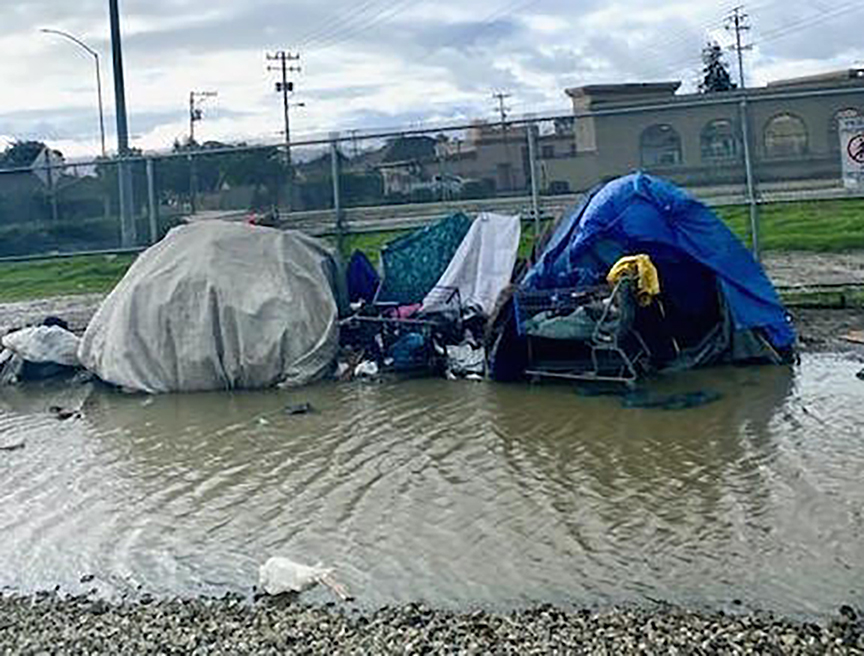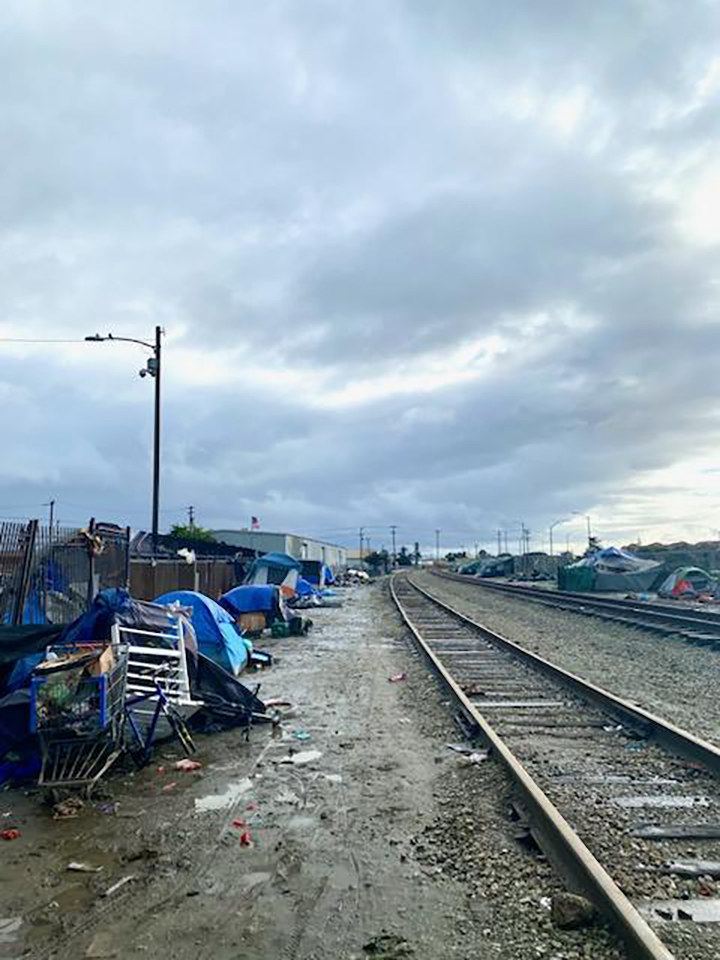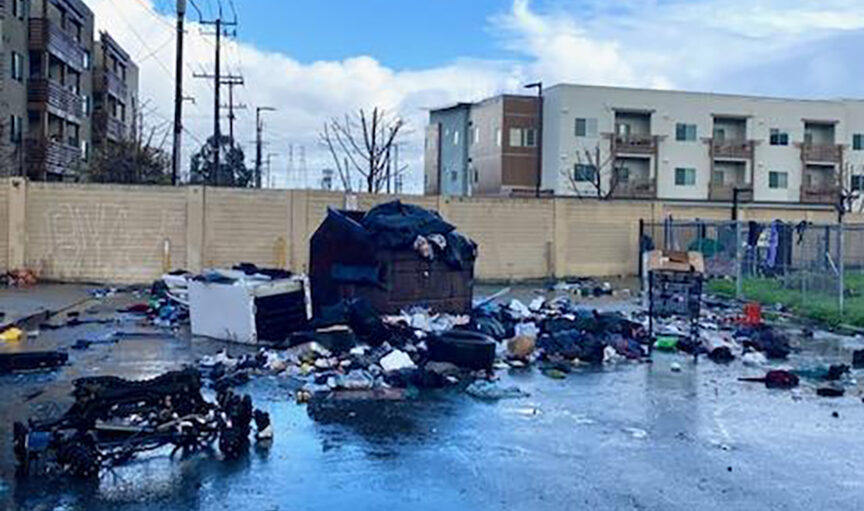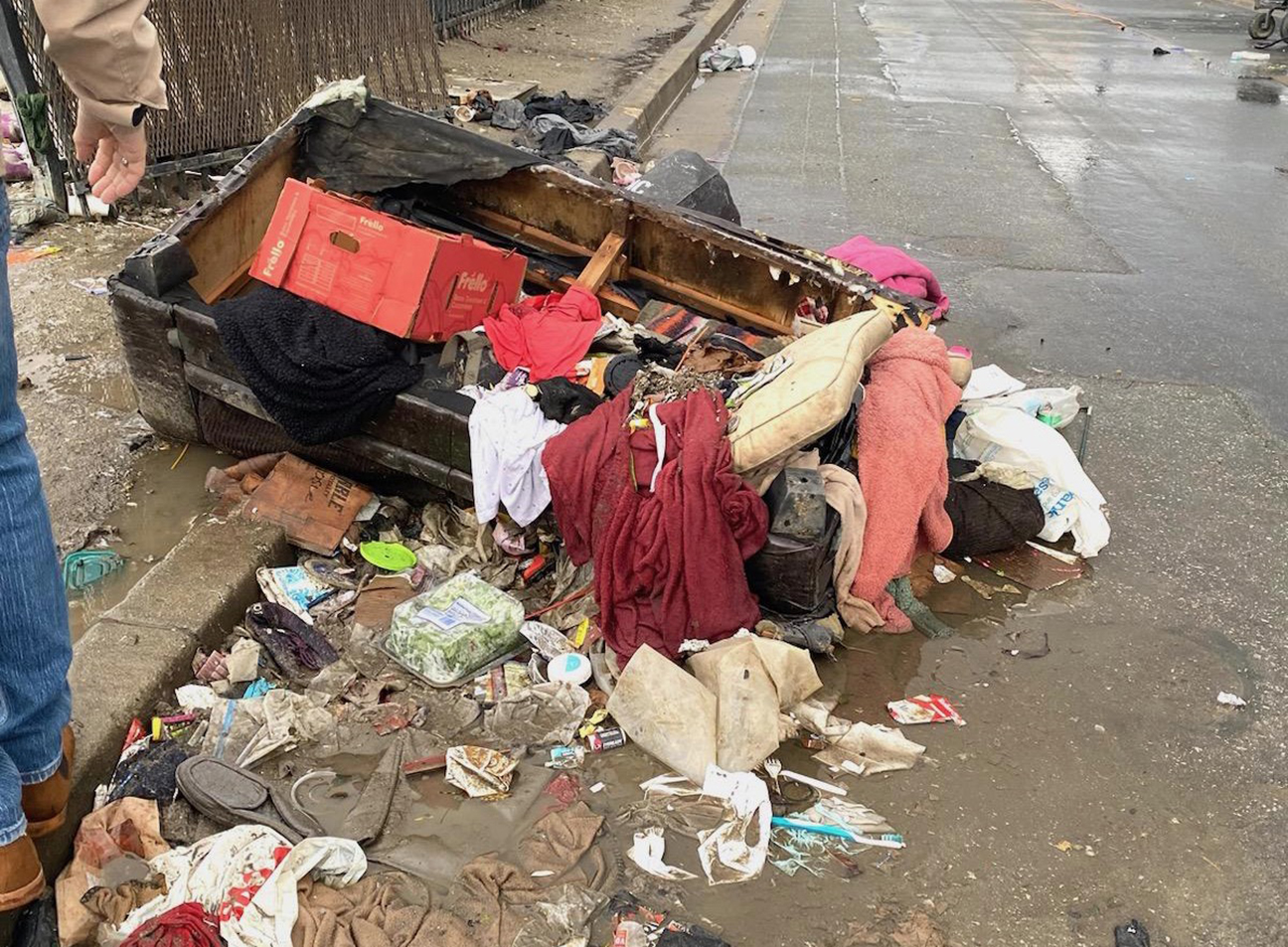| YOUTHBEAT
By Grayden Miller
The Sandpiper
Even as the Monterey Peninsula’s homeless shelters and outreach organizers offer refuge, the quality of life for homeless people continues to deteriorate while housed citizens face flooding from behind closed doors.
Enlarge

According to the 2022 Monterey County census, 66% of more than 2,000 homeless people were unsheltered, with over half not using any housing or rehabilitation assistance. And that was before 60 mph winds, mudslides, and hundreds of millions of dollars in damage.
Yet emergency shelters, such as Community Homeless Solutions, chip away at diminishing the storm damage that without intervention could be irreversible.
“They are losing everything that is of value to them because they don’t have a lot of possessions. But the possessions they have, like vital documents and birth certificates that they need for housing options, are lost because of water damage,” said Regina Williams, program coordinator of the Salinas homeless shelter Chinatown Navigation Center, adding that the program’s housing navigators and senior shelter monitors have recently worked to reinstate the items of homeless people that were lost in the storm.
Bruno, a homeless man from Monterey County, compares the recent storms to the big torrents of the ‘90s, and adds that he was homeless then, too.
“I’ve been here for 30 years, and conditions are the worst they’ve ever been,” he said.
"I’ve been here for 30 years, and conditions are the worst they’ve ever been." Bruno, homeless man from Monterey County
Although Bruno has had recent luck with an emergency shelter in Monterey, his experience has not been universal.
Marissa Kobylenski, board member and communications worker at Interfaith Homeless Emergency Lodging Program, explains that with a recent influx in admissions to the program amid the storm, lines can get longer, beds can get filled up, occupancy can be quickly filled, and families can be torn apart upon admission to gender-segregated shelters that are typically geared up for safety.
“In I-HELP, there are about three times as many men as women admitted, and of the women admitted, more than 50% are above the age of 65, classified as elderly,” added Kobylenski.
Although there are some shelters accommodating women and families, the numbers are limited, leading to a pressing question: Where can one of the most vulnerable groups of people find safety, especially during severe flood and storm warnings?
Kobylenski explains that I-HELP attempted to expand their night-based program to days during the worst of the COVID-19 pandemic, but to no avail. During the storm, the shelter worked through power outages to stay open longer, but lacked proper funding and workers, leaving many to try to find shelter in movie theaters, local malls or libraries.
Refuge at public facilities is often temporary because of early closing, resulting in some of the Peninsula’s homeless population spending the night outdoors against the elements — a great risk to be taking on a regular basis.
Enlarge

| Photo by Grayden Miller
Marcos Ortiz, a program coordinator at Community Homeless Solutions, explained that the storm is more of a ripple effect, creating problems with domestic issues in addition to the more obvious physical ailments.
“People can believe that we have a homeless problem, but it’s more than that, because you’re talking about real, living people like the rest of us,” said Ortiz, adding that immediate care can be one of the best solutions to local homelessness. “But they’re people who need help, with some recovering from the aftereffects of prison, drug addicts, those in need of rehab and victims of domestic violence.”
Enlarge

| Photo by Grayden Miller
Services in the Chinatown Navigation Center facility include a kitchen — often the gathering point for enlistees — showers and bathrooms, outdoor camper vans for COVID-19 patients and bunk beds, comparable to amenities in college dormitories.
The facility was quite the contrast to living conditions about 500 feet down the road, where many tried to protect their personal items with tarps and rain gear. Despite their efforts, flooding continued to build where temporary homes lined the sides of the Salinas Amtrak tracks, and residents were endangered both by close proximity to the train and unyielding storms.
As a result of extenuating circumstances from the storm, Community Human Services, a local nonprofit outreach program for homeless people and shelters, worked to address Monterey’s current problem by distributing rain boots to prevent foot health issues. According to Shawn Stone, chief operating officer at Community Human Services, the objective is to keep people warm and dry, even if they don’t go to local shelters.
"The waterbanks and trees have been getting water, but it’s been pretty inconvenient for me." Former Catholic nun in Monterey
Despite what appears to be a solutionless program, a homeless former Catholic nun in Monterey likes to look on the bright side of things: “The waterbanks and trees have been getting water, but it’s been pretty inconvenient for me.” Along with over half of Monterey Peninsula’s homeless residents, the woman is without care and has made the cold streets her current residence.
Donations to help cases like hers can be made to local organizations, including I-HELP, Community Human Services and Community Homeless Solutions.
Editor’s note: This story originally appeared in the Carmel High School newspaper, The Sandpiper, and some figures have been updated since it was published in February.
Enlarge

Have something to say about this story? Send us a letter.